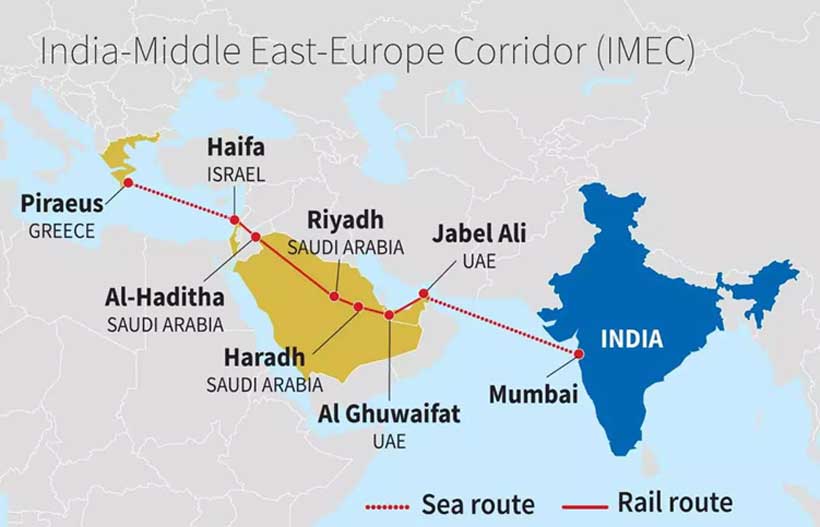Leveraging Scale And Reach To Create Global Connectivity
Global Finance (GF): What are the highlights of your professional journey, and what was appealing about your move to Scotiabank?
Francisco Aristeguieta (FA): Before joining Scotiabank in April 2023 to lead the group’s International and Global Transaction Banking (IGTB) businesses, I was CEO for custody services at State Street. Prior to that, I spent 25 years at Citibank, where I held several senior leadership roles including CEO for Asia, overseeing retail bank operations in the Middle East, Eastern Europe, and the UK. Earlier at Citi, I was CEO for Latin America, and previously led transaction banking at Citi in the region.
After about 30 years as a global banker, joining Scotiabank was a natural progression in my career. The bank’s focus around innovation, client-centricity, and global connectivity, mandated by the newly appointed CEO, aligned with my professional values and aspirations. It’s exciting for a bank of this scale to take this approach, and it plays to my strengths and experience in managing change, building strong teams, and improving performance.
GF: What role does Global Transaction Banking play in Scotiabank’s global strategy?
FA: Global Transaction Banking (GTB) plays a transformational role in Scotiabank’s global strategy. It enables us to deliver the full force of our footprint across corporate, commercial, and SME clients—supporting their needs in managing payrolls, collecting payments, paying suppliers, transacting in multiple currencies, and creating capital efficiency in their supply chains.
As a growth engine and anchor for client primacy, we are embedding Scotiabank into the operational and financial lifeblood of our clients by providing a full suite of transaction solutions like cash management, trade finance, liquidity, and digital integration.
Companies seek straightforward onboarding, a seamless digital interface that feels as intuitive as consumer platforms, and attentive, personalized service at every stage. In response, we’ve enhanced the end-to-end journey:
- Clients now benefit from the Treasury Management Sales Officer (TMO) model that offers a single global point of contact to guide them through their banking needs wherever they operate.
- We have organized our product implementations and servicing team across our footprint to ensure that clients experience the same high standard of service, regardless of their location.
- And ongoing technology upgrades enable an always-on digital experience for managing payroll, payments, and multi-currency transactions.
By bringing these elements together, GTB delivers Scotiabank’s extensive footprint and capabilities in a way that puts client needs at the center—making us a differentiated leader in Canada and an increasingly competitive partner internationally.
GF: With products and services spanning the Americas, Europe, and APAC, how do you take advantage of this unique footprint?

FA: We are leveraging the acquisitions we have historically made around the world by creating a connected network to become truly client centric, rather than product led. This involves using our footprint to create solutions and value propositions that are relevant to our clients, positioning us to become their primary banking partner.
Clients today expect a consistent digital experience wherever they operate. This includes having a single set of login credentials, the ability to view and take action on their cash positions across all markets, and straightforward access to products and services.
Driven by this evolution of client demands, we’re investing heavily in our digital platforms to ensure that, whether a client is in Canada, Mexico, the US, or further afield, they have a unified and intuitive experience. We do this by building a treasury platform that enables seamless connectivity, allowing clients to manage transactions and liquidity across borders with ease. Our platforms also provide data-driven insights, empowering clients to make informed decisions and optimise their cash flow. By integrating these capabilities, we’re not just connecting geographies—we’re connecting clients to the information and functionality they need to thrive globally.
GF: As businesses pursue cross-border opportunities across Canada, the US, and Mexico, how is Scotiabank supporting them in the current global trade environment?
FA: As the old playbook for global trade is being rewritten, our deep, hands-on knowledge of the markets in which we operate has never been more essential. This expertise—honed across Mexico, the US, and Canada—positions us uniquely to guide clients through today’s uncertainty. With around 10,000 employees in Mexico, where we are the fifth largest bank, and strong presence in the US and Canada, our understanding is comprehensive and current.
Our awareness of shifting trade dynamics, such as the growing significance of regional corridors and the rise of new partnerships, allows us to anticipate market needs and offer strategic advice. For example, the US–Canada–Mexico corridor alone accounts for more than US$1 trillion in annual cross-border trade, underscoring the increasing importance of interconnected regional markets.
As treasury teams face leaner structures and greater complexity—juggling technology, innovation, and risk management—our role as a bank is to act as a trusted advisor. We help clients navigate new markets, manage documentation, and simplify integration, deploying our balance sheet to support working capital and Capex financing, and optimizing treasury management for lasting resilience.
In a rapidly evolving environment, our market knowledge is the foundation for enabling clients to adapt, thrive, and seize opportunity amidst uncertainty.
GF: What is your perspective on Scotiabank’s GTB role as a connector of global capital and trade between Europe, APAC, and the Americas?
FA: Europe–particularly Spain–is a key investor in Latin America and the US. We also have a lot of clients from the UK, France, and Italy. In addition to our traditional role of financing these investments, we provide offshore CAD cash management and trade finance.
We also have presence in Asia. A lot of sovereign wealth funds and Asian companies are investing in Canada, Latin America, Mexico, and the US, so we can connect these flows.
Another example is our recent partnership with Davivienda, one of the largest banks in Colombia, which will enable us to participate in a business with greater scale and to provide clients with cash management services across its footprint.
Scotiabank’s commitment to the North America corridor, combined with our retail, commercial, and corporate banking strategy deployed at scale across our markets, positions us as a leading partner for globally connected businesses seeking a seamless treasury experience.
GF: How do you envisage the next stage of Scotiabank’s GTB transformation?
FA: Moving forward, our priority will be to keep the client experience front and center as we invest in our team and build an integrated vision to drive the next stage of GTB’s transformation. In everything we do, we’re looking to make transaction banking simpler, faster, and more transparent.
Technology will be an important part of this plan as it continues to disrupt traditional cash management services. For example, a major focus of our strategy is the rollout of ScotiaConnect, our advanced digital banking portal now live in Colombia, Mexico, and in the US, with expansion planned across markets. ScotiaConnect delivers secure, single sign-on access for treasurers and CFOs, enabling real-time balance and transaction reporting.
Another key upcoming initiative is the enhancement of our cash management capabilities in the US, which allows us to transition from transactional deposit relationships to deeper, day-to-day cash management partnerships, ultimately increasing client primacy. With this launch, we are excited to service US-based needs of our clients. To address this significant opportunity, we have developed a robust roadmap of new capabilities and are committed to continued investment into 2026. We will be closely tracking adoption to ensure we are effectively meeting our client’s evolving needs and maximizing our impact on this market.




